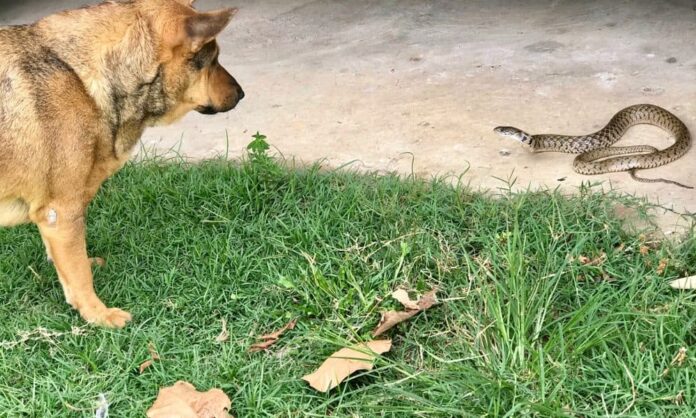How to Keep Your Dog Safe from Snake Encounters: Essential Tips for Dog Owners
For many pet owners, the fear of encountering snakes while walking their dogs can be daunting. The thought of a snake sighting may deter some from venturing outside, but understanding this fear and knowing how to manage it can make a significant difference.
The Reality of Snakes in North America
In North America, while snakes may appear intimidating, the majority are harmless. Only four species of venomous snakes in the United States pose a serious risk, primarily found in the southeastern, southwestern, middle Atlantic, and mountainous regions.
Understanding the Risks of Snake Bites
Even non-venomous snakes can bite when threatened, and any bite can pose health risks if not treated promptly. Effective preparation is crucial for pet owners to ensure their dogs remain safe during outdoor activities.
Five Critical Steps to Take During a Snake Encounter
Here are vital actions to help keep your dog safe if you encounter a snake:
- Remain Calm: Your composure is essential. Staying calm helps you think clearly and conveys tranquility to your dog, minimizing their chances of panic. A calm demeanor can prevent your dog from provoking the snake into a defensive attack.
- Keep Your Dog Leashed: When walking in areas prone to snakes, maintaining a tight leash allows you to control your dog’s movements. Prevent them from exploring potential snake hiding spots, such as tall grass or dense bushes.
- Leave the Area Quickly: If you see a snake, carefully back away while keeping your dog close. Do not run, as quick movements can excite a snake and provoke a strike.
- Observe the Snake: If safe to do so, note key identifying features of the snake. This information can assist your veterinarian in providing appropriate treatment if your dog is bitten. Familiarize yourself with common local snake varieties to recognize potential dangers.
- Seek Veterinary Assistance: Always consult a veterinarian for any snake bite. Many common bite treatments are ineffective and can be harmful. Swift medical attention is critical, especially for venomous bites, to ensure your dog’s safety.
What to Do If Your Dog Is Bitten
Even in regions where venomous snakes are prevalent, most snake bites are treatable with quick veterinary care. Remember:
- Do not attempt to suck out the venom or apply a tourniquet.
- If the bite is from a non-venomous snake, clean the wound with saline but still contact your vet.
Enjoying Outdoor Activities with Your Dog
Living in an area with a high snake population doesn’t mean you must avoid outdoor activities with your dog. With the right precautions and a solid understanding of how to react in these situations, both you and your dog can enjoy your walks safely.
By arming yourself with knowledge and remaining vigilant, you can confidently explore the great outdoors with your canine companion, ensuring a happy and healthy lifestyle.
Found this article helpful? Pin it!












